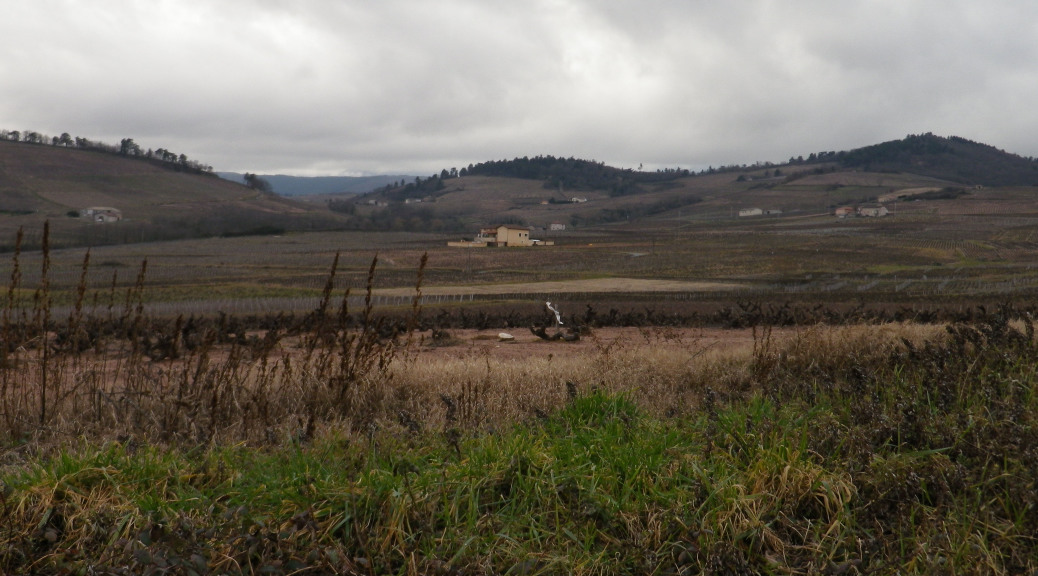Gargantua is a literary character developed by Francois Rabelais, a 16th century French writer. Gargantua is known as an epicurean giant of awesome adventures, son of a wine estate-owning nobleman. The adjectival form has become synonymous with humungous. And it was also the name of a trail I recently hiked. So, I wondered as I hiked, does the name refer to the big-name Beaujolais wines from here enjoyed by epicureans world-wide, or does it refer to epic adventures to be found along the 16-kilometer route, or the size of some of the hills the trail traverses?
It certainly did not refer to the size of Moulin a Vent, the Wind Mill, an iconic landmark, as well as a renowned wine appellation, in the Beaujolais region. It is often easier said than seen for hikers in this very hilly landscape. But that was my start point and my end point on this circuit trail to discover two great crus of Beaujolais.
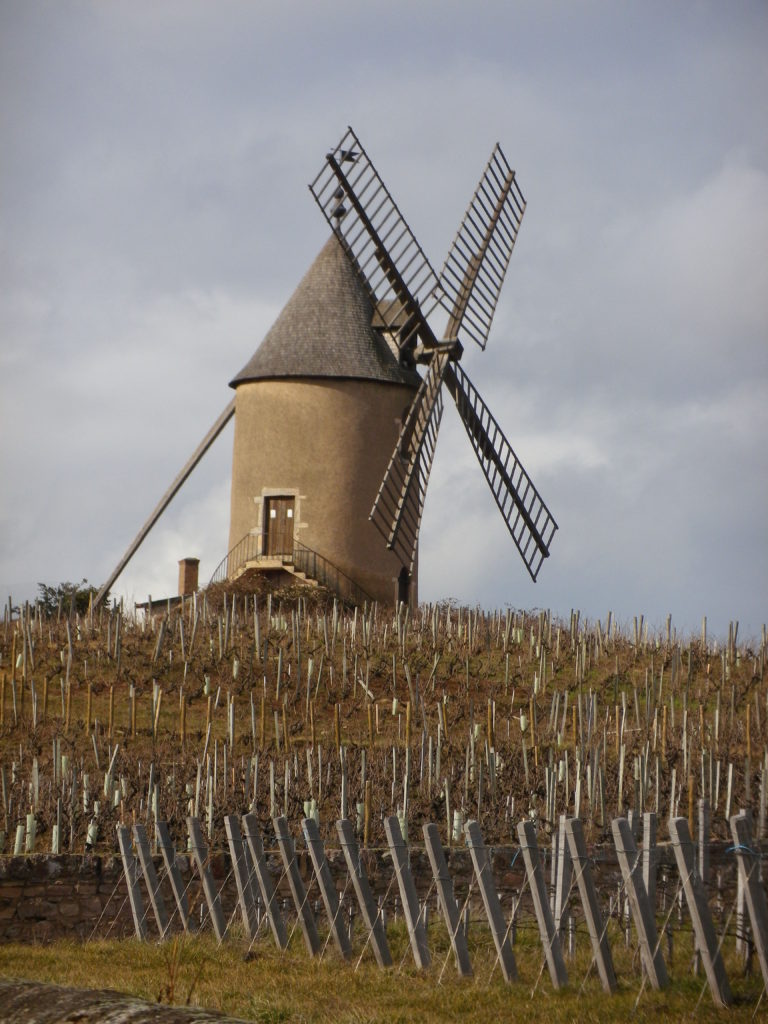
Sandwiched between France’s second city of Lyons (where Rabelais lived for a while), and Macon, the Beaujolais region is very rural. Villages in the northern section of the Beaujolais, the land of ten small but prestigious Beaujolais cru appellations, often resemble hamlets more than villages, and the omnipresent vineyards literally take root in the inhabitants’ backyards.
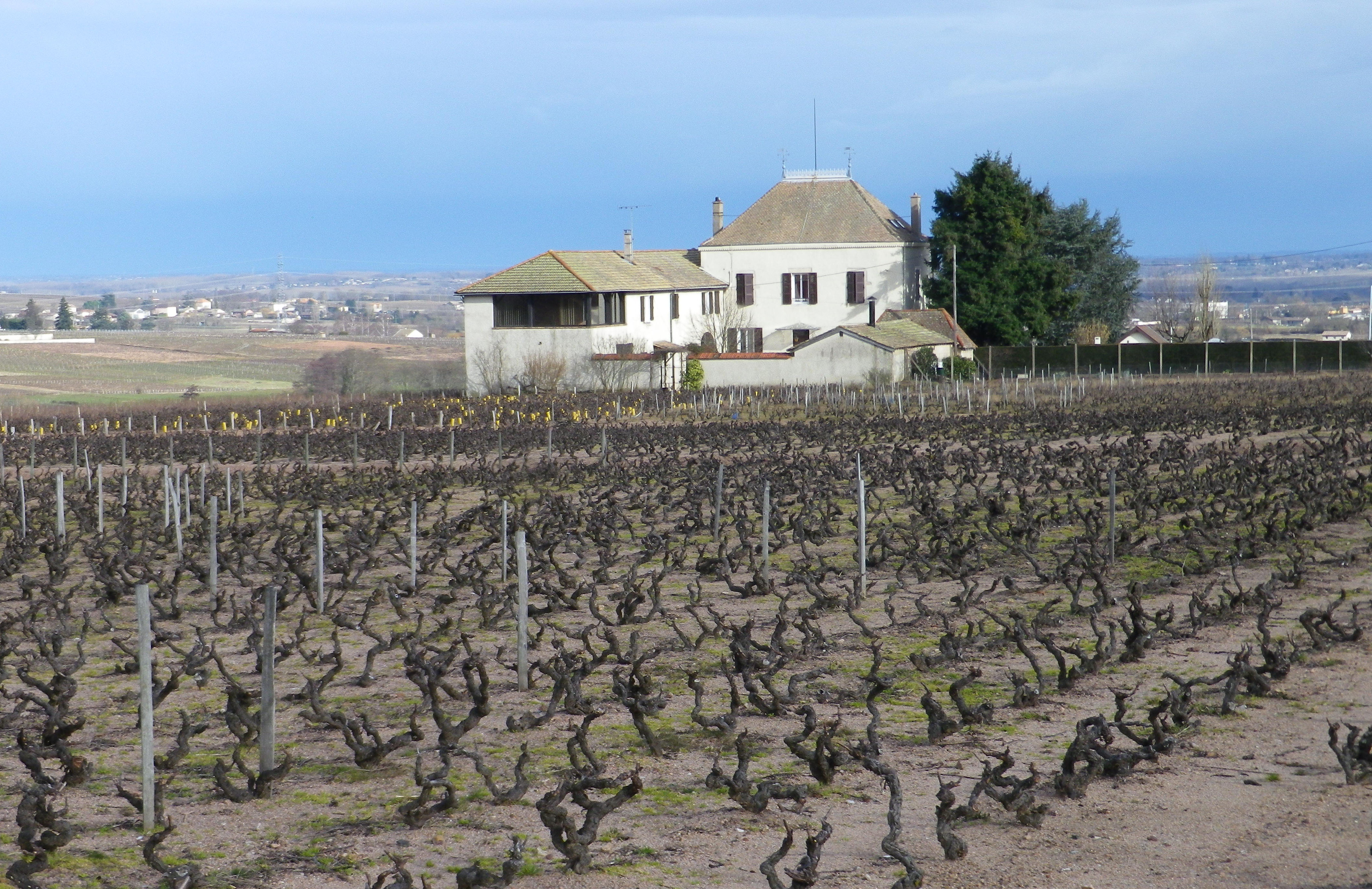
Case in point, the historic windmill, was literally in a vintner’s backyard. Grape vines came right up to it and his house. From the lovely access path leading to it and around it, the contours of the hiking trail are easy to see. Coming down from the windmill, I began the hike, circling around it through the dormant vineyards.
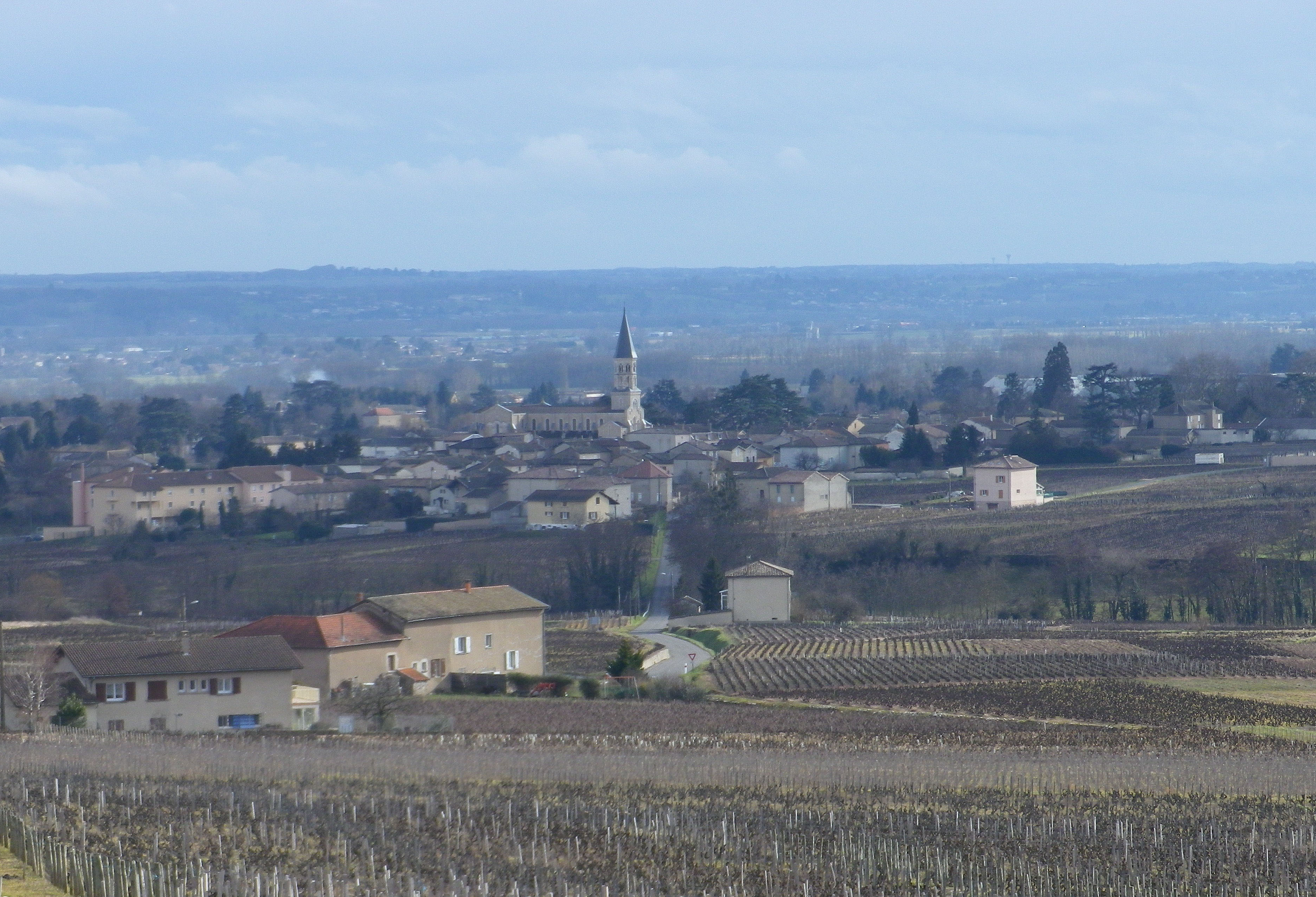
The trail also circled north of the hamlet of Thorins, as it continued to climb toward, but not through, the village center of Chenas, the smallest of all the ten Beaujolais cru appellations. The Cave du Chateau de Chenas, an imposing building set on the side of a hill, was a good point to take a break. It offers wine tasting, various wine-affiliated paraphernalia, and restrooms.
Also at this point, I belatedly realized that following the suggested (clockwise) direction of the trail would result in a slightly easier hike. (Both the contours on the map, and my subsequent experience confirmed this.) Hiking counterclockwise meant a steady climb from the windmill to the chateau, and then hiking an even steeper hill before levelling off atop the highest hill in the area.
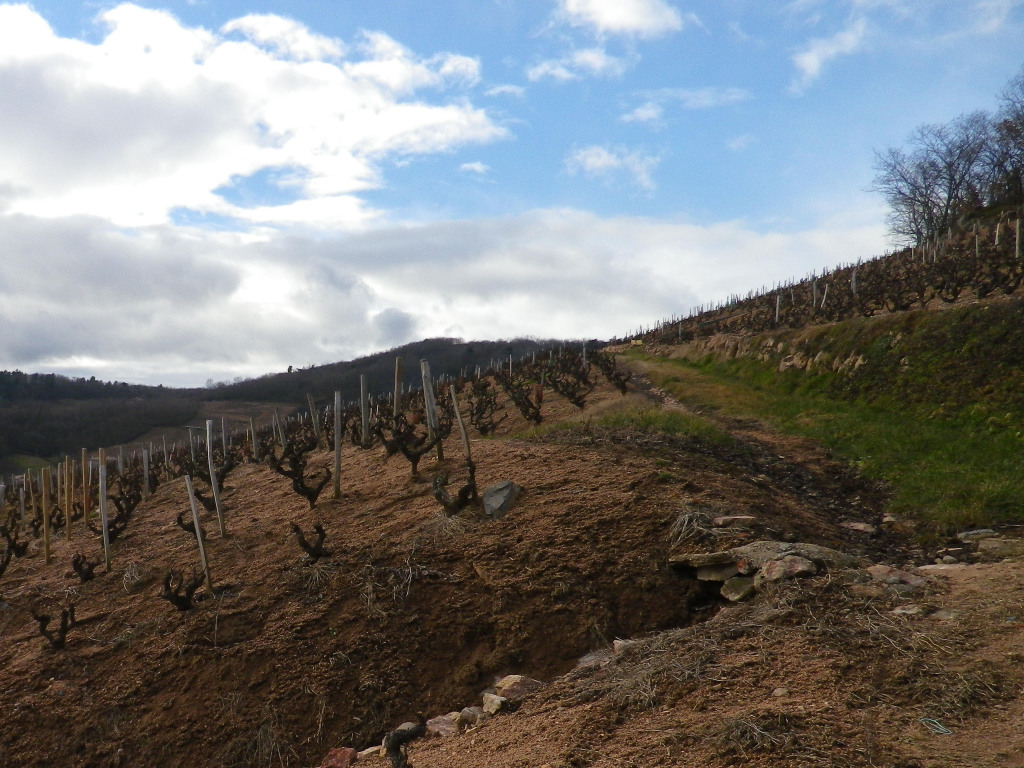
But the climb was worth it! The hilltop was clear of trees, and views from the top were 360 degrees. Picnic tables and a couple of well-placed benches allow hikers to admire the distant views comfortably. Watching the sun quickly sink toward the opposite ridgeline, and hearing gunshots, it was time to get off the hill. I decided to use the advertised shortcut, saving about 95 minutes. Soon I was at a large parking area, and a firing range, where multiple trails converged. There, I picked up the Gargantua trail again.
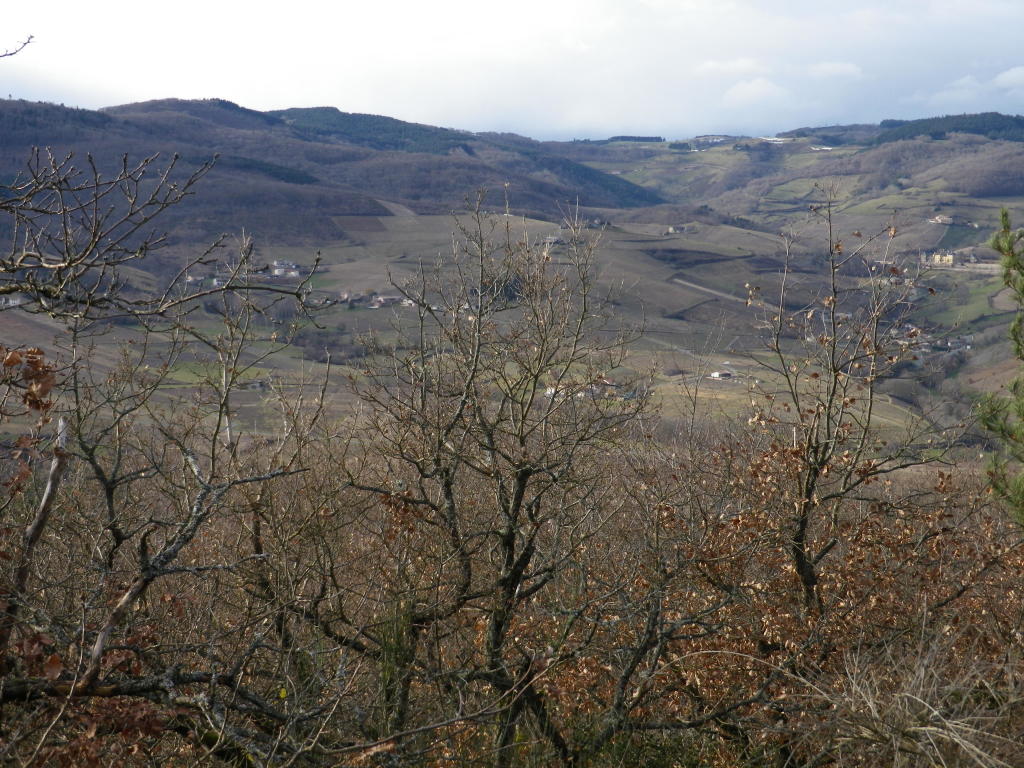
The gradual descent along a narrow path through a wooded area led to a hidden vineyard, tucked in a little corner of the hillside. Once clear of the woods, the vineyards continued, interrupted by the occasional farmhouse, as well as the occasional wine cellar as the trail approached the hamlet of Thorins. Racing against the end of twilight, I followed the trail on vineyard tracks back to the old windmill, only occasionally barely visible as a landmark against a darkening sky.
But sad to say, I still hadn’t solved the puzzle of the trail name by the time I reached it!
